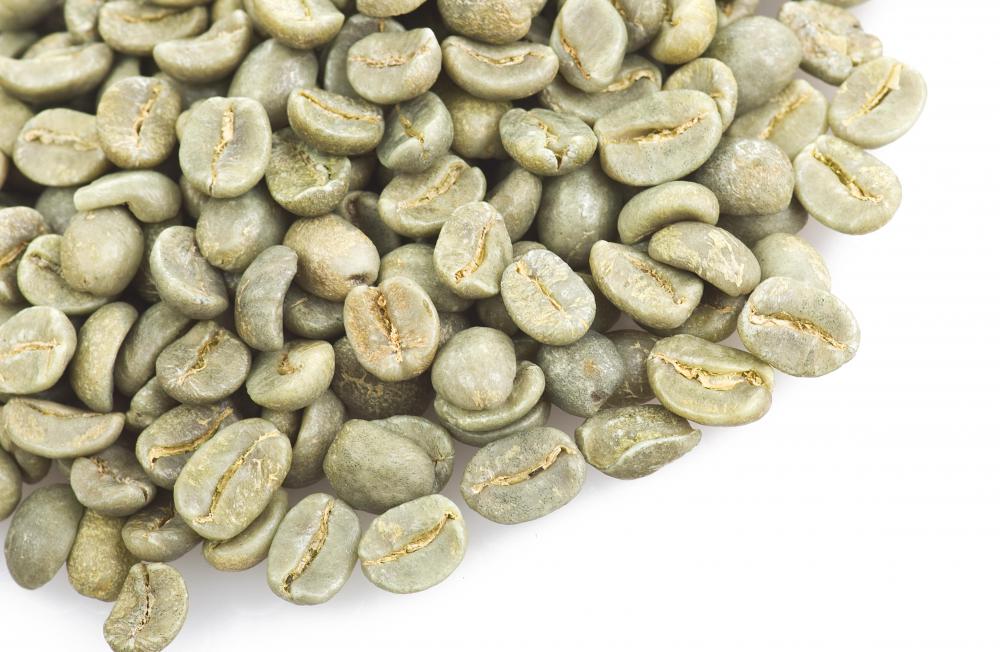At WiseGEEK, we're committed to delivering accurate, trustworthy information. Our expert-authored content is rigorously fact-checked and sourced from credible authorities. Discover how we uphold the highest standards in providing you with reliable knowledge.
Is There Any Caffeine in Decaffeinated Coffee?
A small amount of caffeine is left in decaffeinated coffee, about 3%.
There are several methods for decaffeinating coffee, but most involve soaking the green coffee beans for a period of several hours. This process removes about 97% of the caffeine, but also most of the flavor molecules. Activated carbon then filters the caffeine from the bath, and the beans soak to re-absorb the flavor. Alternatively, an initial batch of beans may be used to saturate the bath with flavor molecules so that consequent batches do not lose these molecules in the process.
Referred to with names like the Swiss Water process, Pure Water process, or Mountain Water process, these methods do not use chemicals to decaffeinate.
Chemical processes are similar, and include the indirect method, and the direct method.

In the indirect method, hot water circulates through the beans which removes the caffeine and flavor molecules. The bath is rid of the beans and the water is treated with methlylene chloride which binds to the caffeine. Heating the water to 114 degrees Fahrenheit (45.5 degrees Celsius) destroys the methlylene chloride compound, which takes the caffeine with it. The beans reabsorb their flavor when reintroduced to the bath. This is called the indirect method, as the coffee beans never directly come in contact with the methlylene chloride.

Methlylene chloride is a highly toxic carcinogen, but easily destroyed at 103.55 F (39.75 C). Coffee is brewed at about 200 F (93 C) and roasted near 400 F (204 C). Studies show any remaining chemical residue falls well below the FDA (Food and Drug Administration) limit set at 10 parts per million.
The direct method is used in products that claim, "Naturally decaffeinated coffee." This process uses ethyl acetate, a natural molecule found in some fruits that easily binds with caffeine. The method is similar as above except that the beans are not removed from the bath and come in direct contact with ethyl acetate. Ethyl acetate boils off at 104 degrees (40 C) and the bath is heated in the process. Ethyl acetate is not a carcinogen.
Caffeine removed using methlylene chloride and ethyl acetate is resold to third parties for use in consumable products.

German, Ludwig Roselius, was the first to devise the decaffeination process in 1900. He referred to his coffee as "sans caffeine" which he later shortened to "Sanka," a name recognized the world over after General Foods acquired and began marketing it in 1932.
AS FEATURED ON:
AS FEATURED ON:














Discussion Comments
I'm decaf because I don't like being a slave to the kick - the ups and downs, and the reliance upon a boost every couple hours to "keep the energy up". It's better to sleep more, eat clean, and lift heavy things at the gym on a regular basis. I'm leaner, stronger, more energetic and focused.
I like the decaf option because I love the smell and taste of coffee. Love the little tidbit about Sanka!
@lightningg88 -- I disagree. I can't drink "real" coffee because of my blood pressure, but after making the switch from caffeinated to decaffeinated, there's not that much of a difference.
I mean, sure, there were a few really bad weeks there, but to a degree, your brain and body still get the "wake up" message from the smell and taste of the coffee -- at least that's how it is for me.
Now I can't do without my organic decaffeinated coffee in the morning, just like I couldn't do without my "real" coffee.
Now I'm a coffee addict (have been since I was 14), so I'm obviously biased, but to me, I don't see the point in decaffeinated coffee.
If you drink coffee, you do it both for the taste and the kick.
All of these gourmet flavored decaffeinated coffees just seem unnecessary to me. If you don't want the caffeine rush, then don't drink coffee.
I guess that explains why some people still claim to get a kick from decaffeinated coffee -- maybe they're extra sensitive, and that 3% left in the decaffeinated coffee beans can still affect them.
Post your comments